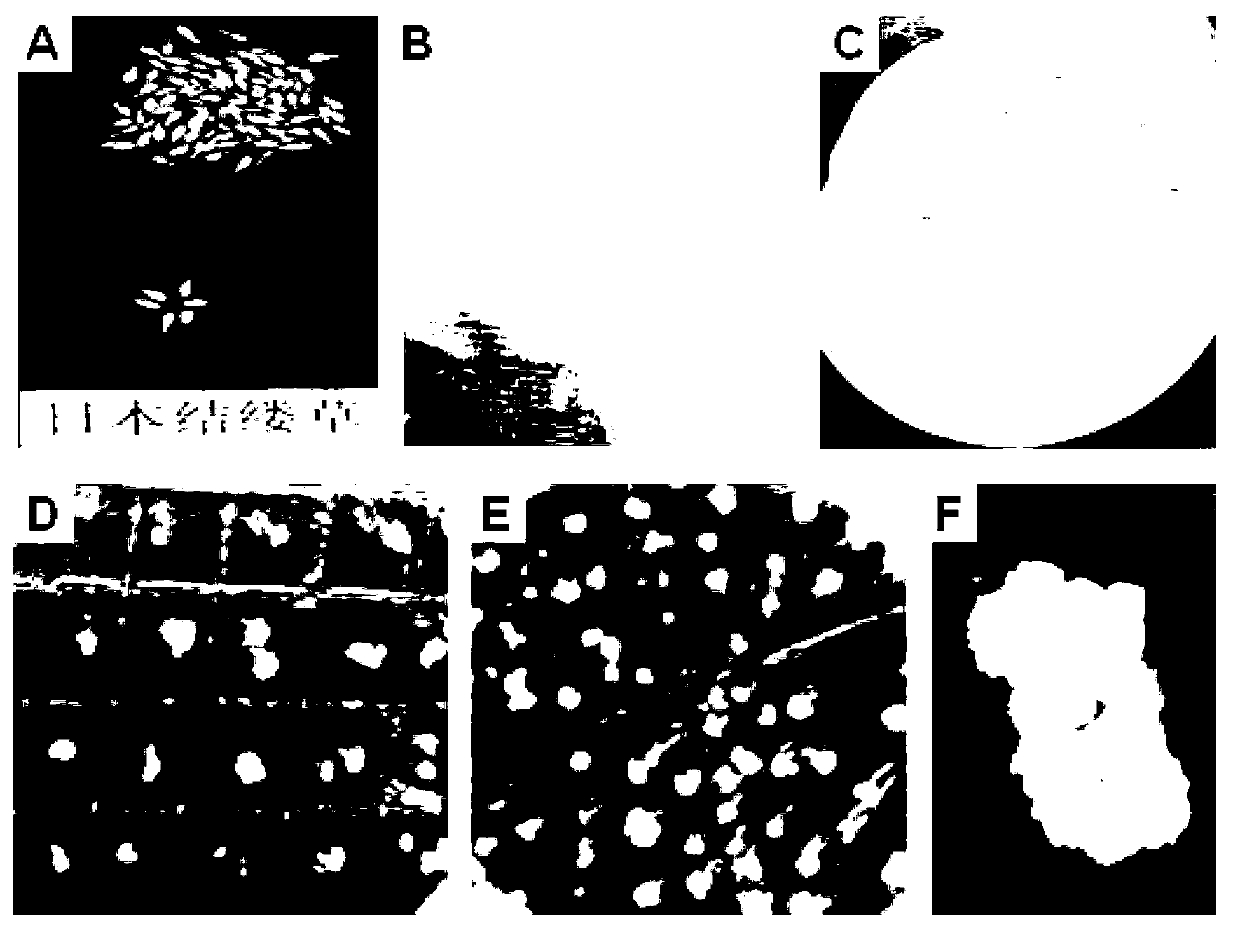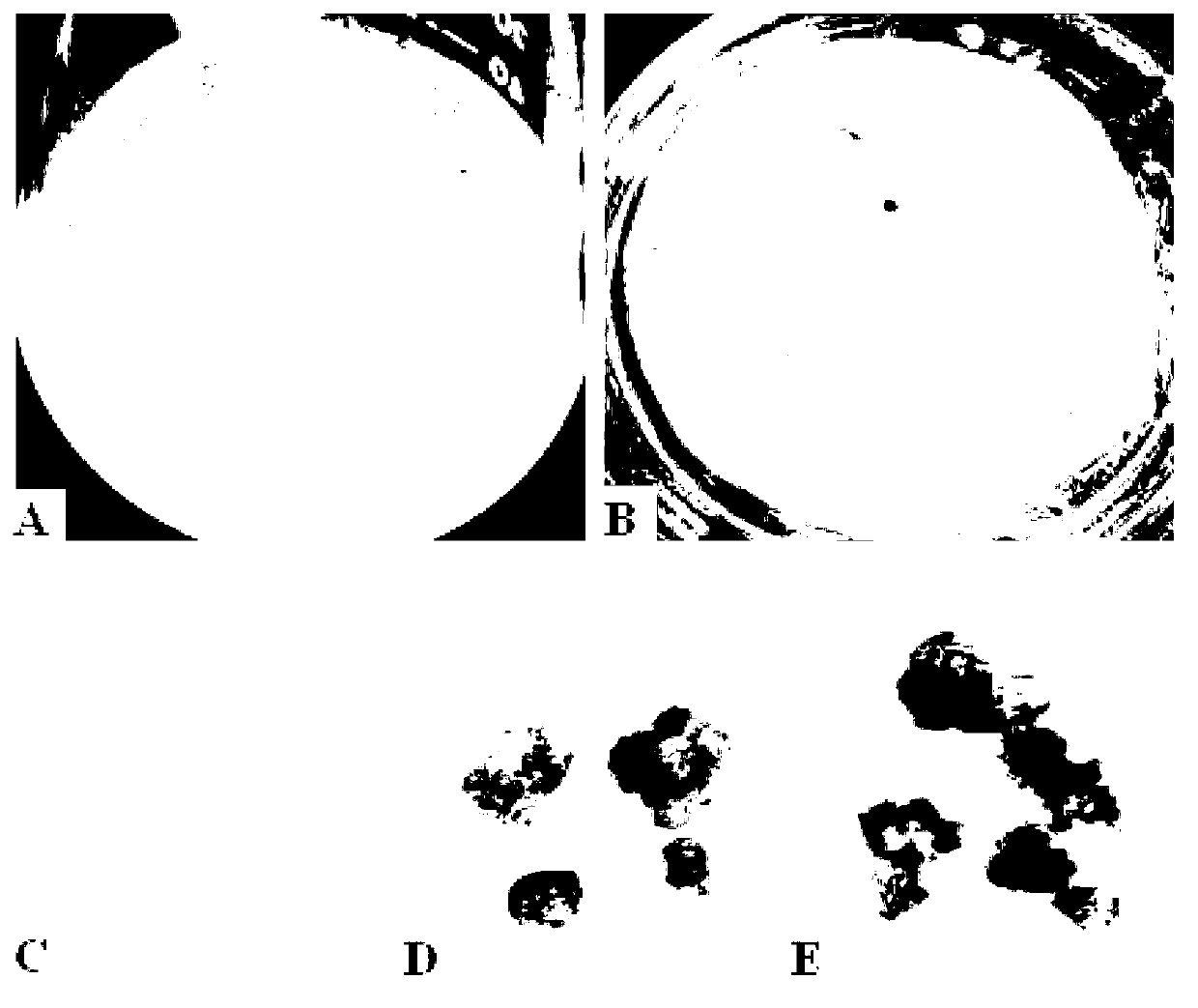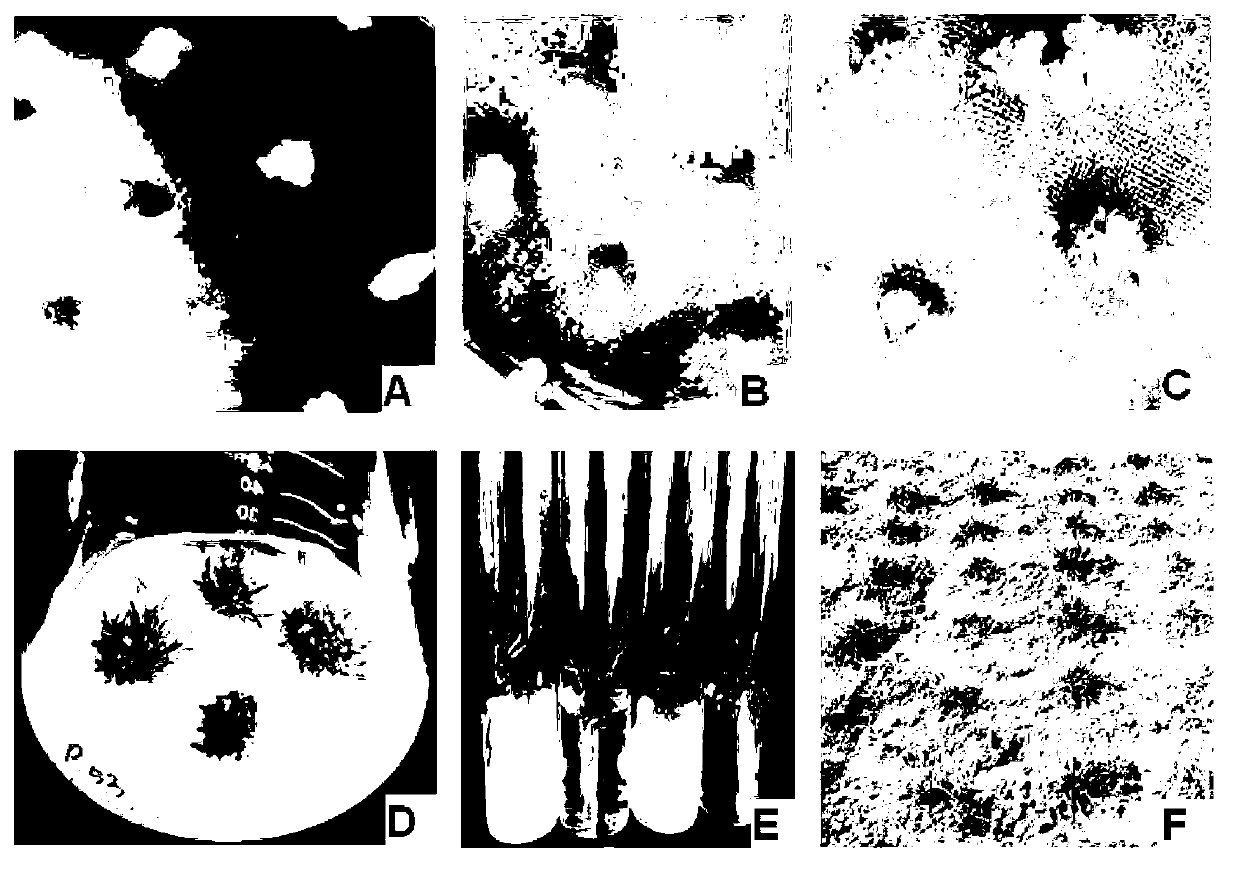Method for increasing cycle conversion utilization of Zoysia japonica high frequency regeneration series
A technology for zoysia and regenerating plants, applied in the biological field, can solve the problems of losing the value and significance of creating a high-frequency regeneration system, and the high-frequency regeneration system cannot be efficiently transformed or utilized.
- Summary
- Abstract
- Description
- Claims
- Application Information
AI Technical Summary
Problems solved by technology
Method used
Image
Examples
Embodiment 1
[0068] Embodiment 1, the acquisition of transgenic Zoysias callus
[0069] 1. Obtaining Zoysias callus
[0070] 1) Obtaining high-frequency regeneration callus line of Zoysia
[0071] The seeds of the Japanese Zoysia species 'Qingdao' were first polished with fine sandpaper to remove the glumes, then rinsed with tap water for about 1 hour, treated with 70% alcohol for 30 seconds under sterile conditions, and then treated with 10% sodium hypochlorite solution (volume percentage, and added 1 drop of spit temperature 20) in an ultrasonic cleaner for 10 minutes, washed 6 times with sterile water, and soaked in sterile water overnight to prepare for inoculation.
[0072] The seeds sterilized the day before were inoculated in the optimized induction medium, and cultured at a temperature of 24-26° C. in the dark for 1 month to obtain induced callus. The induction medium is MS basal medium with various components added with the following final concentrations: 2,4-D at a final concen...
Embodiment 2
[0112] Embodiment 2, utilize stem node meristem to obtain Zoysia regenerated plant
[0113] Since Zoysia is a perennial plant, under the conditions suitable for the growth of Liaozhou Peninsula and Jiaozhou Peninsula, the seeds can be propagated and reused in the second year. However, in Beijing and other places, the heading rate and seed setting rate of Zoysia plants in the second year are low, and it is even difficult to head and set seeds. The high-frequency regeneration lines of Zoysia sativa obtained by screening in tissue culture are not only time-consuming and laborious, but also have good traits and regenerative properties. In order to improve the utilization efficiency of Zoysias high-frequency regeneration lines, in addition to directly using callus lines to transform or obtain regeneration plants, the present invention also provides an optimized method for obtaining Zoysias regeneration plants by using stem segment meristems (this example) and the method for geneti...
Embodiment 3
[0142] Embodiment 3, utilize stem node meristem to obtain transgenic Zoysias buds
[0143] 1. Obtaining transgenic Zoysias buds by using stem meristem
[0144] 1) Inoculate the stem segments b and c obtained in 2) of step 2 of Example 2 into the pre-culture medium II, and culture them at 25-26°C under dark conditions for 7 days; place the stem segments at the stem nodes Cut along the direction perpendicular to the extension of the stem, soak in the bacterial solution containing the recombinant Agrobacterium C58 / pCAMBIA3301 with the target gene, infect at 28°C, 140rpm, and non-vacuum (1 standard atmospheric pressure) for 30 minutes, and then Put the triangular flask filled with stem segments and bacterial solution into a vacuum pump, vacuumize (that is, 0.4 standard atmospheric pressure) and let it stand for infection for 10 minutes. Blot the excess liquid with sterilized filter paper for the stem section after infection, and place it on the co-culture medium (add the followin...
PUM
| Property | Measurement | Unit |
|---|---|---|
| Diameter | aaaaa | aaaaa |
Abstract
Description
Claims
Application Information
 Login to View More
Login to View More - R&D
- Intellectual Property
- Life Sciences
- Materials
- Tech Scout
- Unparalleled Data Quality
- Higher Quality Content
- 60% Fewer Hallucinations
Browse by: Latest US Patents, China's latest patents, Technical Efficacy Thesaurus, Application Domain, Technology Topic, Popular Technical Reports.
© 2025 PatSnap. All rights reserved.Legal|Privacy policy|Modern Slavery Act Transparency Statement|Sitemap|About US| Contact US: help@patsnap.com



